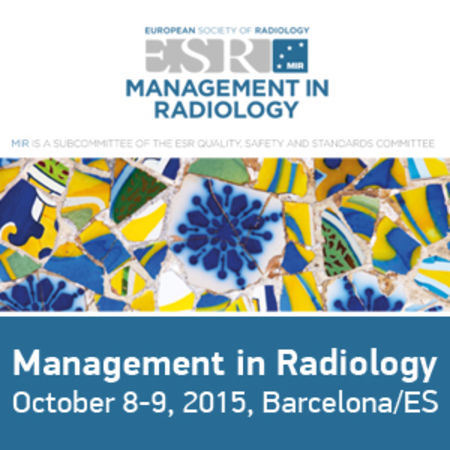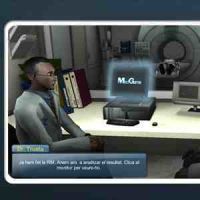From the vantage point of a 45 year career in radiology, Stephen Baker, Professor and Chair, Department of Radiology, Rutgers, The State University of New Jersey, USA, has warned of a possible dark age for radiology and radiologists. Speaking at the Management in Radiology (MIR) annual meeting in Barcelona this month, Baker, a member of HealthManagement.org’s Imaging Editorial Board, warned of the threats to radiology from low recruitment of entrants to radiology in the United States, computer-determined / computer-aided detection and liquid biopsy. “What work will we continue to do and who will do the work?” Baker asked. “I wish to arouse your passions, not necessarily to scare you”, he added.
IBM announced the creation of Watson Health on 24 September, noted Baker. The company is getting into the business of developing image algorithms for use in radiology.
Computer-assisted diagnosis is also an ambiguous term. In breast radiology it is spatial recognition of space density differences to predict histologic characteristics. For a radiologist in a cancer hospital, the patient with liver lesions will be diagnosed then scanned to assess tumour response to treatment. Then it will be computer-determined radiation. The computer will validate. This diminishes the value of an expert’s opinion as the interpreter of the macroscopic changes. For example, a study in Academic Radiology by Dankerl and colleagues of a CADx system found that the system reliably distinguished various liver lesions. The authors wrote that it even outperformed radiologists when accessing the same image information.
Will it replace CT/ MR in cancer screening, speculated Baker. He thinks so and says that radiologists need to prepare for it. So what does it mean for radiology? The typical radiologist response to disruptive innovation is to view such disruptions as cyclical and resolvable rather than structural and permanently transformative.
Baker concluded by saying that radiology is vulnerable as it mostly does not involve direct patient care. It is the only specialty entirely in control of technology, and is in the macroscopic image business. If we define genomic interpretation, would we then need to see the genus of radiology display? That is a question radiologists need to worry about, he said.
Further Reading
Baker S(2015) Radiology: the end of the road? HealthManagement.org The Journal, 15(3); 228.
Claire Pillar
Managing editor, HealthManagement.org
Declining Radiology Residency Recruitment in the United States
Baker noted that until recently graduating medical students in the United States favoured residencies in radiology, ophthalmology, anaesthesiology and dermatology (ROAD), four specialties with good reimbursement and allowing a manageable lifestyle. “But now we’ve hit the end of the road”, he cautioned. The numbers in his institution’s residency programme have decreased. Nationally 137 positions were not filled this year in the radiology matching process. Previously, radiology residency positions were increasing, mainly because of the growth of CT and MR. Now, unfilled positions are filled more and more by applicants from outside the United States. Also, applicants with poor academic credentials are able to get in, observed Baker. Anecdotally, when he asks medical students why they are not interested in radiology, they say that everything’s going to be computerised, that they won’t have any work to do, and it won’t be interesting anymore. “That is the perception out there we have to counter”, he said.Threat from Computer Algorithms?
Radiologists should also be concerned about advances in computer-aided and computer-determined diagnosis, said Baker. He noted that there are several studies on the use of computer assessment. For example, Yuh and colleagues in 2008 published an analysis of computer-aided assessment of head CT for patients with suspected brain injury, compared to reading by a neuroradiologist. Baker noted that when accuracy was equal, computer-aided was a misnomer; it is really computer-determined. If a computer can interpret images as well as a neuroradiologist then who will eventually own the technology and be the proprietors? That has implications for the value of work and radiologist compensation.IBM announced the creation of Watson Health on 24 September, noted Baker. The company is getting into the business of developing image algorithms for use in radiology.
Computer-assisted diagnosis is also an ambiguous term. In breast radiology it is spatial recognition of space density differences to predict histologic characteristics. For a radiologist in a cancer hospital, the patient with liver lesions will be diagnosed then scanned to assess tumour response to treatment. Then it will be computer-determined radiation. The computer will validate. This diminishes the value of an expert’s opinion as the interpreter of the macroscopic changes. For example, a study in Academic Radiology by Dankerl and colleagues of a CADx system found that the system reliably distinguished various liver lesions. The authors wrote that it even outperformed radiologists when accessing the same image information.
Liquid Biopsy
Baker said he was even more worried about the threat from liquid biopsy, which was headline news in the New York Times in April (”New blood test shows promise in cancer fight”). The technique has already been shown to be valuable for non-small cell lung cancer (NSCLC), colorectal cancer, melanoma, lymphoma and HPV virus cervical cancers. The application of liquid biopsy for specific tumours, each of these things should cause pause for radiologist, said Baker. The implications of using tissue biopsy compared to liquid biopsy are vast. A tumour burden can be monitored with liquid biopsy and it is much more specific and less invasive.Will it replace CT/ MR in cancer screening, speculated Baker. He thinks so and says that radiologists need to prepare for it. So what does it mean for radiology? The typical radiologist response to disruptive innovation is to view such disruptions as cyclical and resolvable rather than structural and permanently transformative.
Baker concluded by saying that radiology is vulnerable as it mostly does not involve direct patient care. It is the only specialty entirely in control of technology, and is in the macroscopic image business. If we define genomic interpretation, would we then need to see the genus of radiology display? That is a question radiologists need to worry about, he said.
Further Reading
Baker S(2015) Radiology: the end of the road? HealthManagement.org The Journal, 15(3); 228.
Claire Pillar
Managing editor, HealthManagement.org
Latest Articles
Radiology, Biopsy, Management in Radiology, recruitment, computer-aided diagnosis, #MIR2015
Prof. Stephen Baker outlines his concerns for the future of radiology: low recruitment of radiology residents in the United States, and the threats of computer-determined diagnosis and liquid biopsy.



























